Hello! Mariah back again with more content about LoRA. A few weeks before this blog post I posted a tutorial about how to set up a simple peer-to-peer network for Sending Sensor Data Over LoRa. During the process of that project I thought it would be fun to test the range of different antennas. It turned out to be quite and adventure (a bear even made an appearance!) to reach the outer limits of testing the range of a LoRa signal. Any of the configurations mentioned in this blog would work with the following tutorial if you'd like to play along. Let's dive in!
Sending Sensor Data over LoRa
November 4, 2022
This tutorial will show you how setup a simple peer-to-peer connection to send and receive sensor data using LoRa.
Patch Antenna
During our adventure out and about, we were able to get 1.45 mi away from our transmitter (as the crow flies). One thing to remember about LoRa is that line of sight, humidity, and obstacles are all things to take into consideration with your layout; we were able to find a few spots between buildings and breaks in trees to receive the signal, but having both antennas a bit higher up will likely extend this range!
Whip Antenna
This was a fun excursion out into the fresh snow and warm sun! Just like with our last setup, we ventured farther and farther out, stopping and hopping out of the car to check our signal and searching for spots that afforded us a clear shot back to SparkFun where our transmitter was hooked up on the roof. We were able to get out 4.26 mi with just two of these antennas chatting with each other!
The trek begins!
Fiberglass Antenna
Now, with this guy, we knew we were gonna be able to get pretty far out; but, as I mentioned earlier, obstacles such as buildings and trees will interfere with our signal and prevent us from really seeing what this antenna is capable of. So, where in Colorado could we possibly go to get a bit higher up… on an adventure to the mountains of course! With our increased elevation, we were able to make it 6.42 mi away from our transmitter! This led to lots of whooping and high-fives, of course.
Our transmitter antenna set-up on the roof of SparkFun!
Attempting to gain a little height to find the signal!
Hiking out of the trees a bit to reduce interference and we've got data!
Additional tips and tricks!
We’ve mentioned a couple times that there are a few things that can interfere with LoRa, and some necessary preemptive research to do, but let’s do a quick recap!
- Obstacles - LoRa is most effective when the signal has line of sight between the transmitter and receiver; we were able to get some readings in both wooded and urban areas, but it’s super helpful to go up as well as out
- Temperature - it has been recorded that increases in surrounding temperatures as well as the temperature of the nodes can affect the efficacy of LoRa signals; out here in the Rockies, the sun can be really brutal which can heat up our antennas, particularly the black ones. Luckily, it’s also winter so we weren’t too concerned about it, but it’s definitely something to keep in mind if you have a setup that works in the cold and you intend to keep it up through to the warmer months
- Humidity - increased moisture in the air can bog down a signal as it attempts to push through the water in the air; we actually noticed a much faster signal reception when testing the whip and patch antennas, as the humidity on that day was around 17%, whereas our fiberglass day was at 47%
- Regional Frequency Band Parameters - there are certain guidelines that are in place for public use of LoRa frequencies and bandwidths; be sure to double check yours here (the table starts on page 10) before you get up and running! Since we’re located in Colorado, we use the range for the U.S. which is 902 - 928 MHz
A Helpful Tool!
One Quick Note!
Lastly, a safety tip: remember that if you hike up into the mountains of Colorado to keep an eye out for furry friends! With teeth! We saw this sweet lil guy about 15 seconds after we got back in the car; a little too close for comfort, but we like to think he’s a big ‘ol nerd like us and wanted to check out what we were doing!
Is LoRa really long-range? Well, does a bear squat in the woods??
Any LoRa users out there?
Let us know what you've been using LoRa for and if you've never used this long-range wireless technology before we hope to see you incorporate into a future project!
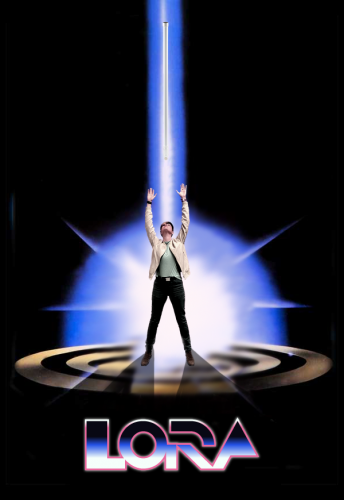
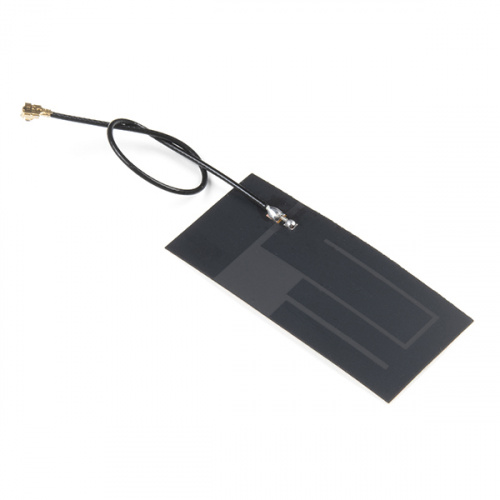
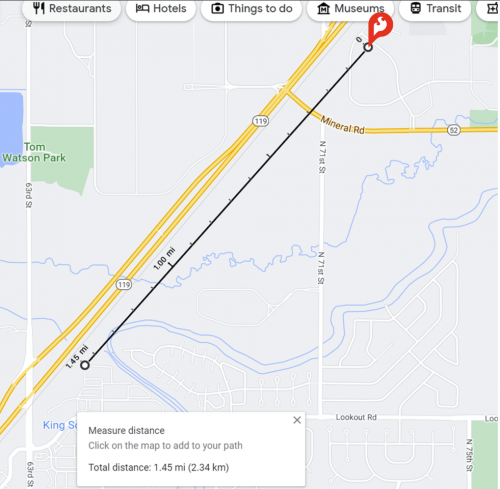
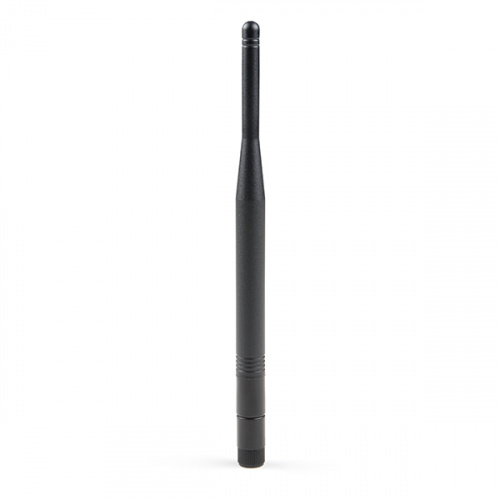
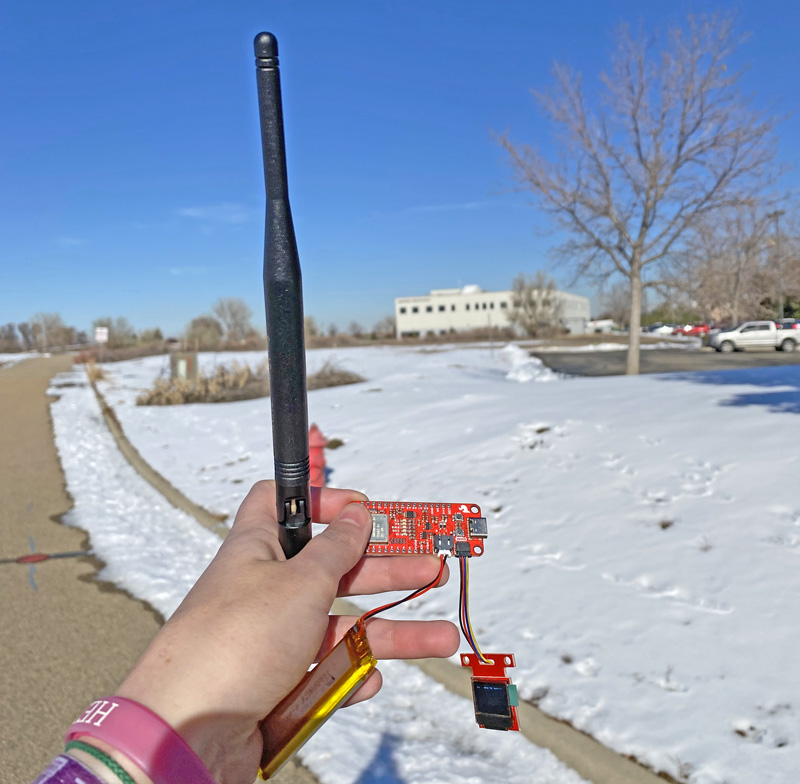



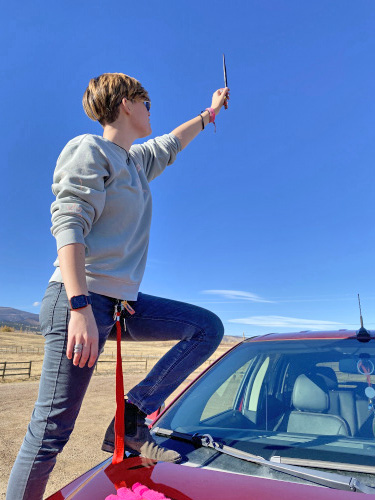



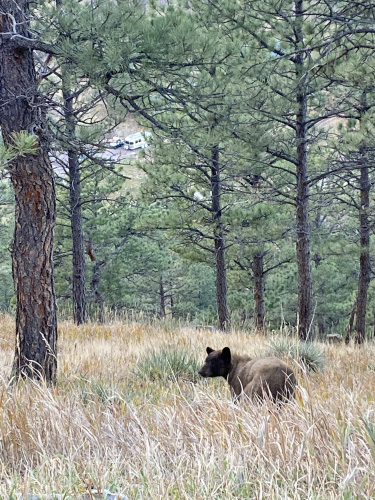
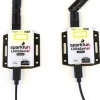
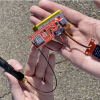
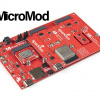
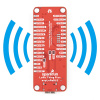

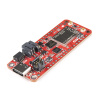






I use a simple home made 915 mhz dipole that is vertically polarized. It is very reliable up to about 1/2 miles in a heavily wooded, hilly area.
What were the orientations (or polarizations ) of the receiving antennas relative to the transmitting antenna at Sparkfun's rooftop when testing was done? Antennas need to have the the same polarization for maximum signal reception don't they?
Why’d you do so dirty mounting that 5.8 dBi. You’re blocking nearly a third of the antenna with the fence. I’ve gotten over 20 miles on a similar antenna to a from a cheap small 2db dBi on a transmitter, not even line of sight.
Please clarify: Were all three tests done with both ends using the same type of antennas, or were they all done with either the server or the client using a "constant" antenna? At least as importantly, was the height of the server's antenna the same for all three tests?
What was the radio configuration? (Frequency, bandwidth, spreading factor, coding factor). I can’t seem to get more than 1/3 mi with an SX127x based LoRa radio at 915 MHz, 250 Hz BW, SF 7, CR 4/5, and the same black antenna in your post.